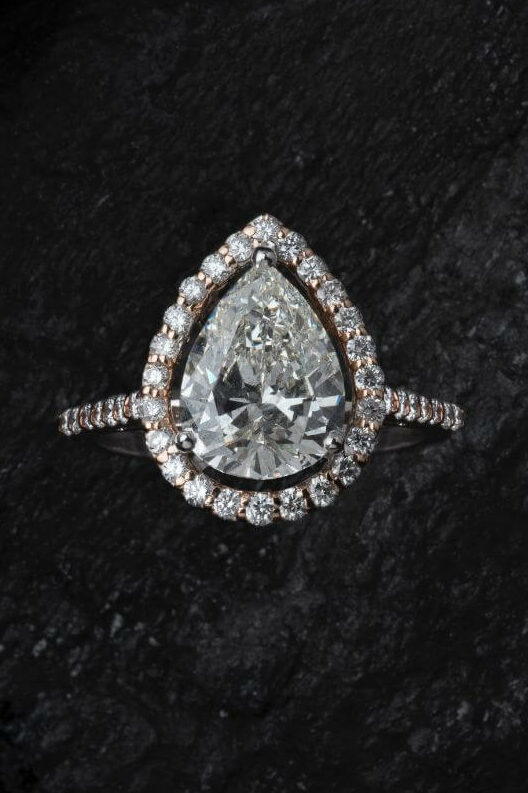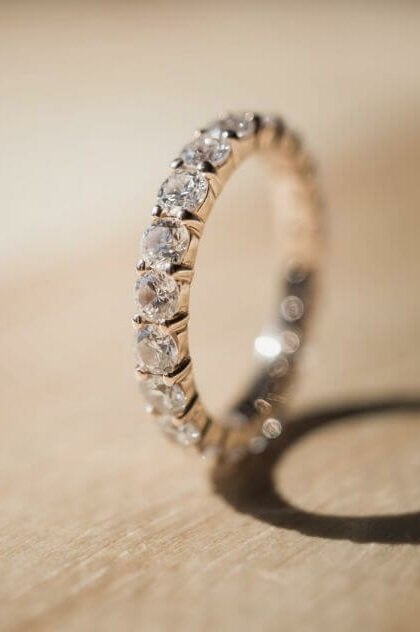Shape & the Four C's
Most gem diamonds are traded on the wholesale market based on single values for four different qualities, knows as the four Cs: Cut, Color, Carat, and Clarity. For example, knowing that a diamond is rated as 1.5 carats (300 mg), VS2 clarity, F color, excellent cut round brilliant, is enough to reasonably establish an expected price range. More detailed information from within each characteristic is used to determine the actual market value for individual stones.
Customers who purchase individual diamonds are often advised to use the four C's to pick the diamond that is right for them. Click one of the C's below or scroll to learn more.
Diamond Shape
In your search for the perfect diamond ring, shape is a great starting point. Why? Because most women have some preference about the shape of the diamond they want in their engagement ring.
The shape of the diamond is the very first thing people notice when looking at diamonds. There are several diamond shapes, each with their own unique characteristics.
Round
Princess
Marquise
Emerald
Asscher
The Asscher cut is nearly identical to the emerald except for the square shape.
Oval
Pear
The pear is a truly unique brilliant cut diamond. The pear's single point gives it a beautiful teardrop appearance.
Heart
Combine the time-honored symbolism of a diamond with the classic heart shape and you have a brilliant symbol of love that is unmistakable.


